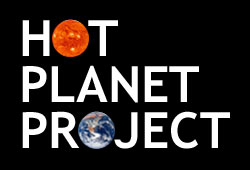May, June and July were the hottest on record for the continental United States. No surprise to those of us living here.
From Joe Romm’s summation of NOAA’s report on the month of July:
“At 108.1 degrees F,” NOAA noted, “Death Valley, California, had the hottest average monthly temperature for any recording station in the world.”
As the National Park Service points out, “If that doesn’t sound hot to you, realize that is the average temperature for the month, including overnight lows.”
In July, the aptly-named Furnace Creek in Death Valley “reached a high temperature of 127 degrees F four days in a row.”
This news underscores the reality that we are already living in a different and more dangerous climate. It also underscores the reality that curbing carbon emissions is the bottom line.
Experiencing the heat as much as hearing the news about the record brings something else to mind: fresh water. We need water to drink, to bathe in, and to swim in. We also need it to keep our food crops from withering.
And thus the latest news about fracking is doubly infuriating. A study published in Science Advances documents that water use in oil and gas fracking skyrocketed between 2011 in 2016. Water use rose 770 percent over that period. Here’s coverage of the report from InsideClimate News’ Phil McKenna.

